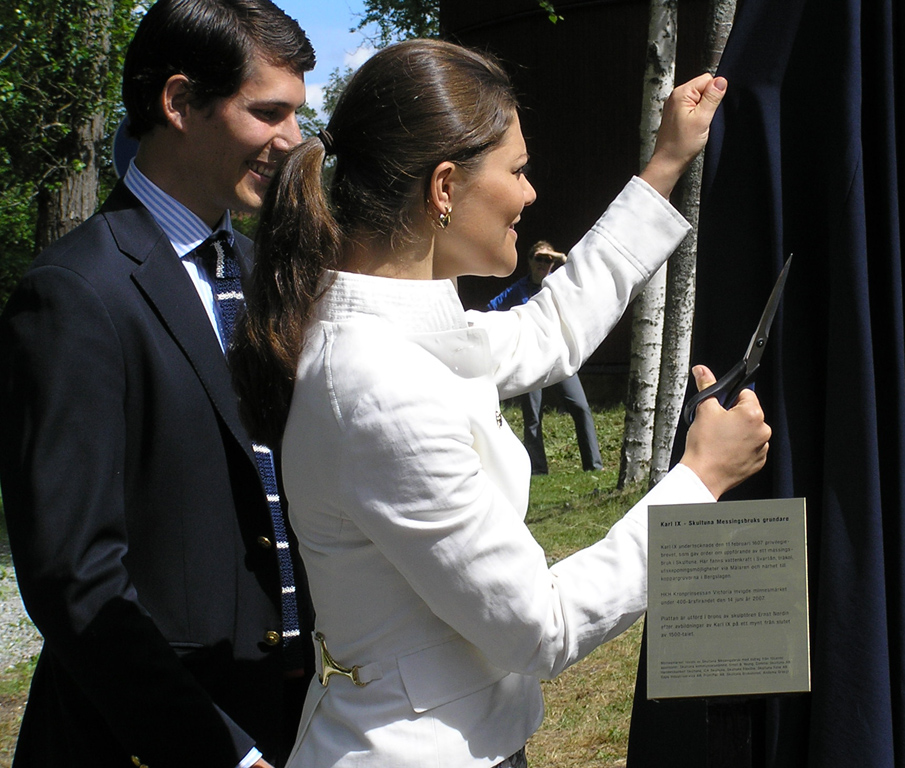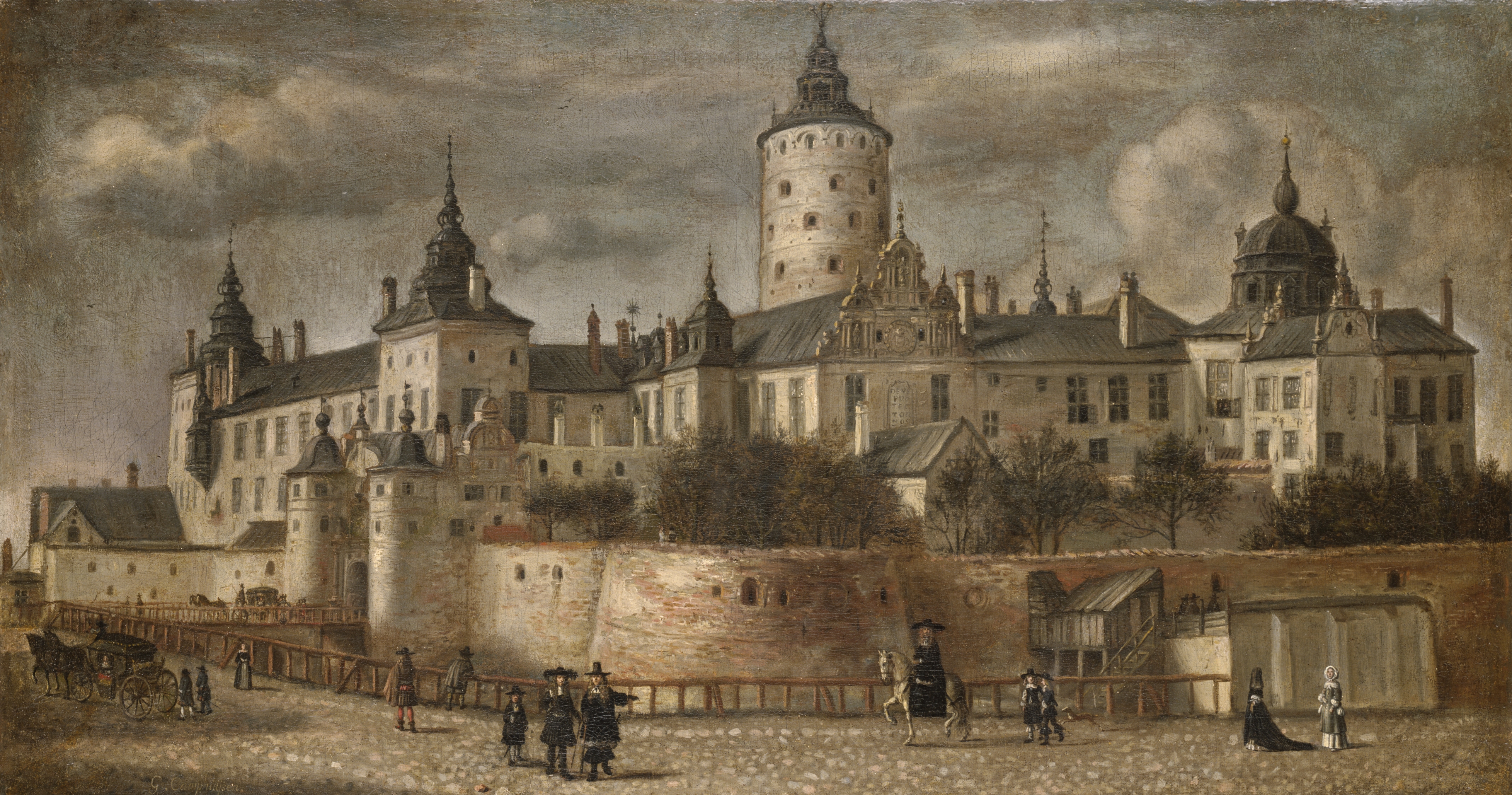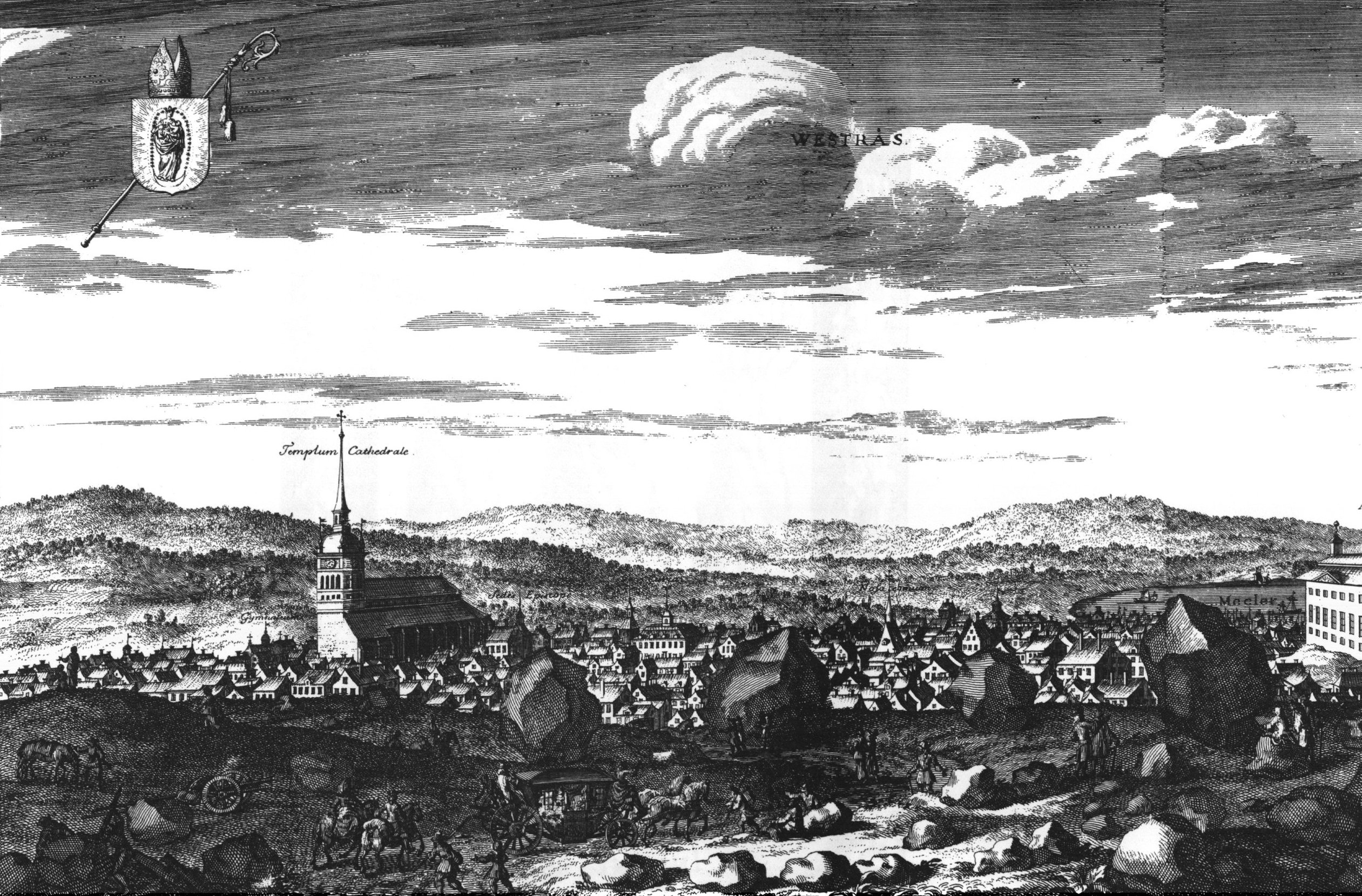|
Sala Silver Mine
Sala Silver Mine ( sv, Sala silvergruva) is a mine in Sala Municipality, in Västmanland County in Sweden. The mine was in continuous production from the 15th century until 1908. Additional mining occurred in 1950–1951 and also in 1945–1962 in the neighbouring Bronäs Mine. Geology The Sala ore is mainly known for its high silver content though the ore also contained economic amounts of lead and zinc. The zinc was hosted by the mineral sphalerite while lead was hosted by the mineral galena. Silver occurred as a native phase rarely but was mainly hosted by complex antimonides and sulphosalts, dispersed in the matrices of galena and sphalerite, invisible to the naked eye but visible in microscope. The silver content in typical galena-dominated Sala ore was about 0.15% to 1%, the latter being one of the highest contents of silver in galena ever reported. In the sphalerite-dominated ore, the silver content is only about 0.015-0.02%, which was still enough to exploit and would ev ... [...More Info...] [...Related Items...] OR: [Wikipedia] [Google] [Baidu] |
Sala Municipality, Sweden
Sala Municipality ( sv, Sala kommun) is a municipality in Västmanland County in central Sweden. Its seat is located in the city of Sala. The present municipality was created in 1971, when the ''City of Sala'' was amalgamated with the rural municipalities ''Möklinta'' and ''Tärna'' and a part of ''Västerfärnebo''. Localities * Kila * Kumla kyrkby * Möklinta * Norrbäck * Ransta * Sala (seat) * Salbohed * Sätra brunn * Västerfärnebo See also *Gussjön Gussjön is a lake in Sala Municipality, Sweden. {{authority control [...More Info...] [...Related Items...] OR: [Wikipedia] [Google] [Baidu] |
Chlorite Group
The chlorites are the group of phyllosilicate minerals common in low-grade metamorphic rocks and in altered igneous rocks. Greenschist, formed by metamorphism of basalt or other low-silica volcanic rock, typically contains significant amounts of chlorite. Chlorite minerals show a wide variety of compositions, in which magnesium, iron, aluminium, and silicon substitute for each other in the crystal structure. A complete solid solution series exists between the two most common end members, magnesium-rich clinochlore and iron-rich chamosite. In addition, manganese, zinc, lithium, and calcium species are known. The great range in composition results in considerable variation in physical, optical, and X-ray properties. Similarly, the range of chemical composition allows chlorite group minerals to exist over a wide range of temperature and pressure conditions. For this reason chlorite minerals are ubiquitous minerals within low and medium temperature metamorphic rocks, some igneous ... [...More Info...] [...Related Items...] OR: [Wikipedia] [Google] [Baidu] |
Victoria Of Sweden
Victoria, Crown Princess of Sweden, Duchess of Västergötland (Victoria Ingrid Alice Désirée; born 14 July 1977) is the heir apparent to the Swedish throne, as the eldest child of King Carl XVI Gustaf. If she ascends to the throne as expected, she would be Sweden's fourth queen regnant (after Margaret, Christina and Ulrika Eleonora) and the first since 1720. Her inheritance is secured by Sweden's 1979 Act of Succession, the first law in Western Europe to adopt royal absolute primogeniture. Early life Victoria was born on 14 July 1977 at 21:45 CET at the Karolinska Hospital in Solna, Stockholm County, Sweden, and is the oldest child of King Carl XVI Gustaf and Queen Silvia. She is a member of the House of Bernadotte. Born as a princess of Sweden, she was designated crown princess in 1979 ( SFS 1979:932) ahead of her younger brother. Her place as first in the line of succession formally went into effect on 1 January 1980 with the parliamentary change to the Act of Successio ... [...More Info...] [...Related Items...] OR: [Wikipedia] [Google] [Baidu] |
Middle Ages
In the history of Europe, the Middle Ages or medieval period lasted approximately from the late 5th to the late 15th centuries, similar to the post-classical period of global history. It began with the fall of the Western Roman Empire and transitioned into the Renaissance and the Age of Discovery. The Middle Ages is the middle period of the three traditional divisions of Western history: classical antiquity, the medieval period, and the modern period. The medieval period is itself subdivided into the Early Early may refer to: History * The beginning or oldest part of a defined historical period, as opposed to middle or late periods, e.g.: ** Early Christianity ** Early modern Europe Places in the United States * Early, Iowa * Early, Texas * Early ..., High Middle Ages, High, and Late Middle Ages. Population decline, counterurbanisation, the collapse of centralized authority, invasions, and mass migrations of tribes, which had begun in late antiquity, continued i ... [...More Info...] [...Related Items...] OR: [Wikipedia] [Google] [Baidu] |
Charles XI Of Sweden
Charles XI or Carl ( sv, Karl XI; ) was King of Sweden from 1660 until his death, in a period of Swedish history known as the Swedish Empire (1611–1721). He was the only son of King Charles X Gustav of Sweden and Hedwig Eleonora of Holstein-Gottorp. His father died when he was four years old, so Charles was educated by his governors until his coronation at the age of seventeen. Soon afterward, he was forced out on military expeditions to secure the recently acquired dominions from Danish troops in the Scanian War. Having successfully fought off the Danes, he returned to Stockholm and engaged in correcting the country's neglected political, financial, and economic situation. He managed to sustain peace during the remaining 20 years of his reign. Changes in finance, commerce, national maritime and land armaments, judicial procedure, church government, and education emerged during this period. Charles XI was succeeded by his only son Charles XII, who made use of the wel ... [...More Info...] [...Related Items...] OR: [Wikipedia] [Google] [Baidu] |
Christina, Queen Of Sweden
Christina ( sv, Kristina, 18 December ( New Style) 1626 – 19 April 1689), a member of the House of Vasa, was Queen of Sweden in her own right from 1632 until her abdication in 1654. She succeeded her father Gustavus Adolphus upon his death at the Battle of Lützen (1632), Battle of Lützen in 1632, but began ruling the Swedish Empire when she reached the age of eighteen in 1644. The Swedish queen is remembered as one of the most learned women of the 17th century. She was fond of books, manuscripts, paintings, and sculptures. With her interest in religion, philosophy, mathematics, and alchemy, she attracted many scientists to Stockholm, wanting the city to become the "Athens of the North". The Peace of Westphalia allowed her to establish an academy or university when and wherever she wanted. In 1644, she began issuing copper in lumps as large as fifteen kilograms to serve as currency. Christina's financial extravagance brought the state to the verge of bankruptcy, and t ... [...More Info...] [...Related Items...] OR: [Wikipedia] [Google] [Baidu] |
Avesta Jernverks AB
The Avesta () is the primary collection of religious texts of Zoroastrianism, composed in the Avestan language. The Avesta texts fall into several different categories, arranged either by dialect, or by usage. The principal text in the liturgical group is the ''Yasna'', which takes its name from the Yasna ceremony, Zoroastrianism's primary act of worship, and at which the ''Yasna'' text is recited. The most important portion of the ''Yasna'' texts are the five Gathas, consisting of seventeen hymns attributed to Zoroaster himself. These hymns, together with five other short Old Avestan texts that are also part of the ''Yasna'', are in the Old (or 'Gathic') Avestan language. The remainder of the ''Yasna'''s texts are in Younger Avestan, which is not only from a later stage of the language, but also from a different geographic region. Extensions to the Yasna ceremony include the texts of the ''Vendidad'' and the ''Visperad''. The ''Visperad'' extensions consist mainly of additi ... [...More Info...] [...Related Items...] OR: [Wikipedia] [Google] [Baidu] |
Västerås
Västerås ( , , ) is a city in central Sweden on the shore of Lake Mälaren in the province of Västmanland, west of Stockholm. The city had a population of 127,799 at the end of 2019, out of the municipal total of 154,049. Västerås is the seat of Västerås Municipality, the capital of Västmanland County and an episcopal see. History Västerås is one of the oldest cities in Sweden and Northern Europe. The name originates from ''Västra Aros'' (West Aros), which refers to the river mouth of Svartån. The area has been populated since the Nordic Viking Age, before 1000 CE. In the beginning of the 11th century it was the second largest city in Sweden, and by the 12th century had become the seat of the bishop. Anundshög is located just outside the City of Västerås. Anundshög is Sweden's largest burial mound. "Hög" is derived from the Old Norse word ''haugr'' meaning mound or barrow. It was built about 500 CE and is over wide and is almost high. In the ensuing centur ... [...More Info...] [...Related Items...] OR: [Wikipedia] [Google] [Baidu] |
Granite
Granite () is a coarse-grained ( phaneritic) intrusive igneous rock composed mostly of quartz, alkali feldspar, and plagioclase. It forms from magma with a high content of silica and alkali metal oxides that slowly cools and solidifies underground. It is common in the continental crust of Earth, where it is found in igneous intrusions. These range in size from dikes only a few centimeters across to batholiths exposed over hundreds of square kilometers. Granite is typical of a larger family of ''granitic rocks'', or '' granitoids'', that are composed mostly of coarse-grained quartz and feldspars in varying proportions. These rocks are classified by the relative percentages of quartz, alkali feldspar, and plagioclase (the QAPF classification), with true granite representing granitic rocks rich in quartz and alkali feldspar. Most granitic rocks also contain mica or amphibole minerals, though a few (known as leucogranites) contain almost no dark minerals. Granite is ... [...More Info...] [...Related Items...] OR: [Wikipedia] [Google] [Baidu] |
Gustavus Adolphus Of Sweden
Gustavus Adolphus (9 December N.S 19 December">Old_Style_and_New_Style_dates.html" ;"title="/nowiki>Old Style and New Style dates">N.S 19 December15946 November Old Style and New Style dates">N.S 16 November] 1632), also known in English as Gustav II Adolf or Gustav II Adolph, was King of Sweden from 1611 to 1632, and is credited for the rise of Swedish Empire, Sweden as a great European power ( sv, Stormaktstiden). During his reign, Sweden became one of the primary military forces in Europe during the Thirty Years' War, helping to determine the political and religious balance of power in Europe. He was formally and posthumously given the name Gustavus Adolphus the Great ( sv, Gustav Adolf den store; la, Gustavus Adolphus Magnus) by the Riksdag of the Estates in 1634. He is often regarded as one of the greatest military commanders in modern history, with use of an early form of combined arms. His most notable military victory was the Battle of Breitenfeld in 1631. With his ... [...More Info...] [...Related Items...] OR: [Wikipedia] [Google] [Baidu] |



_en2.png)



.jpg)